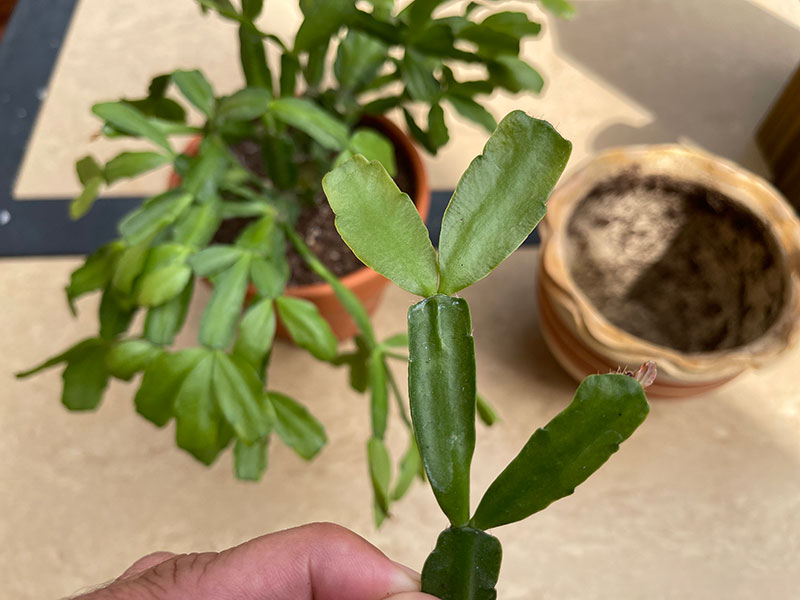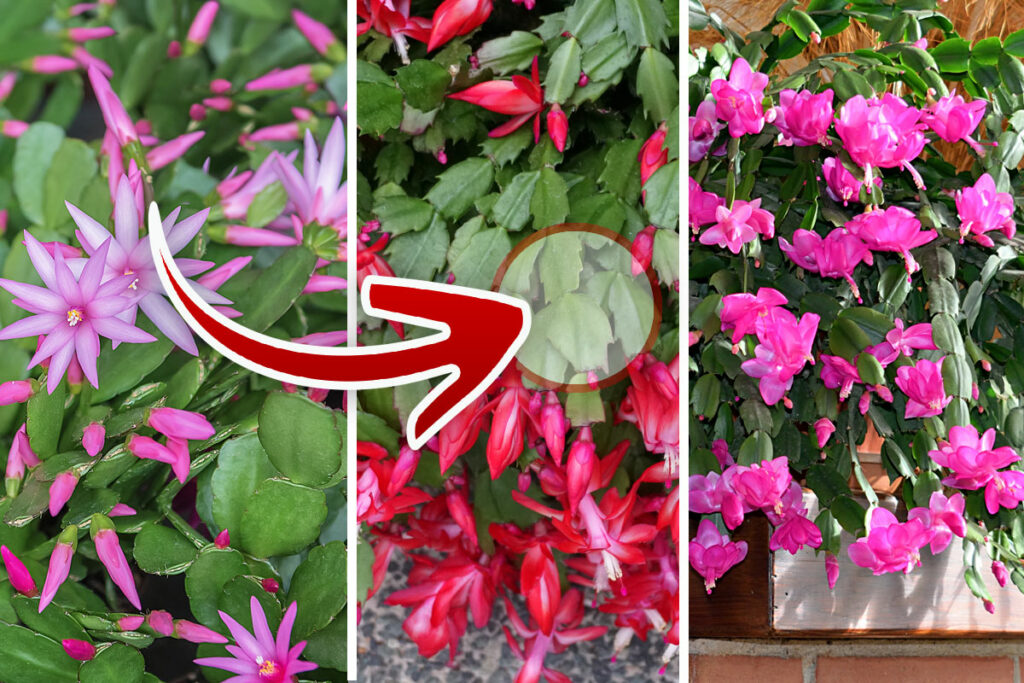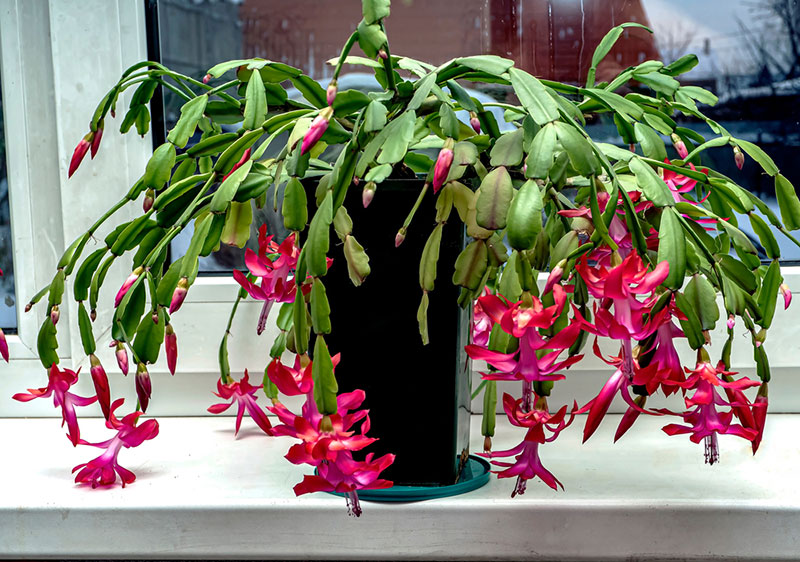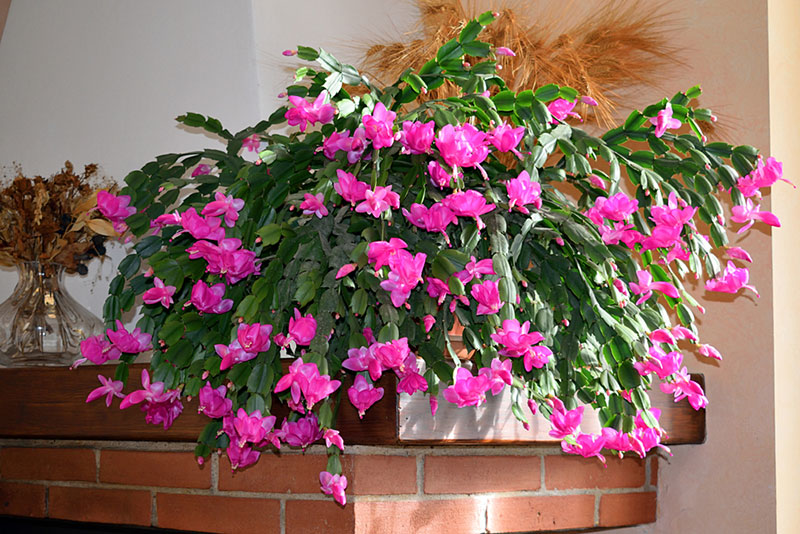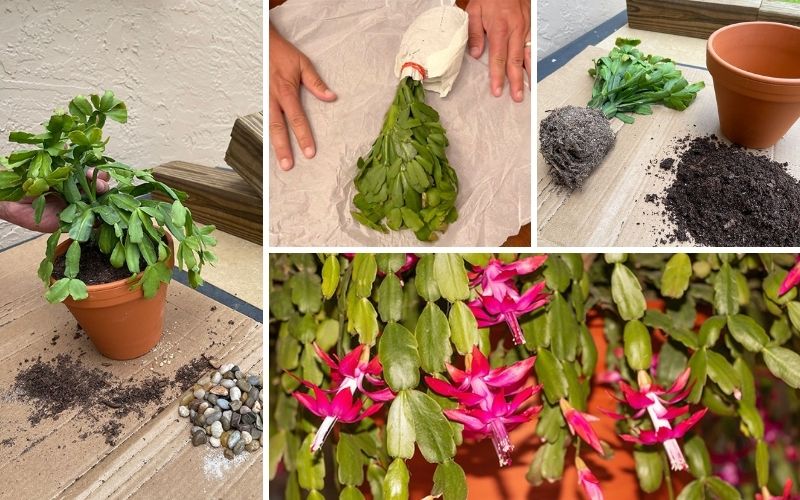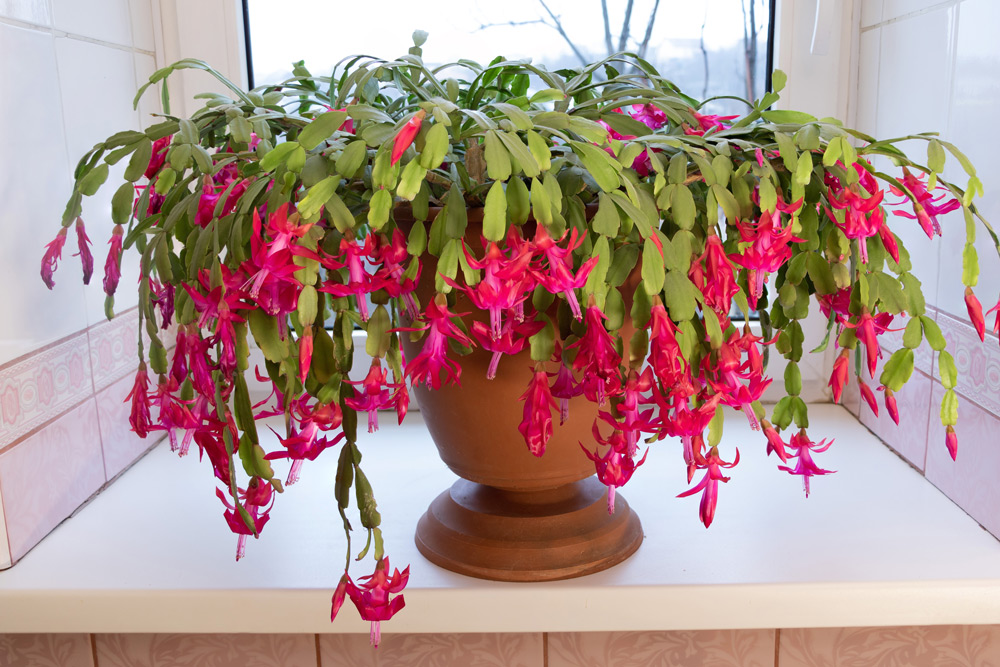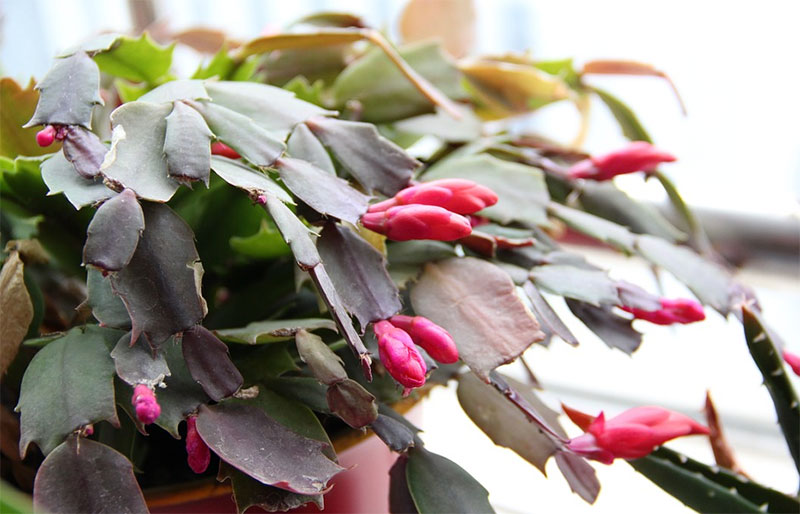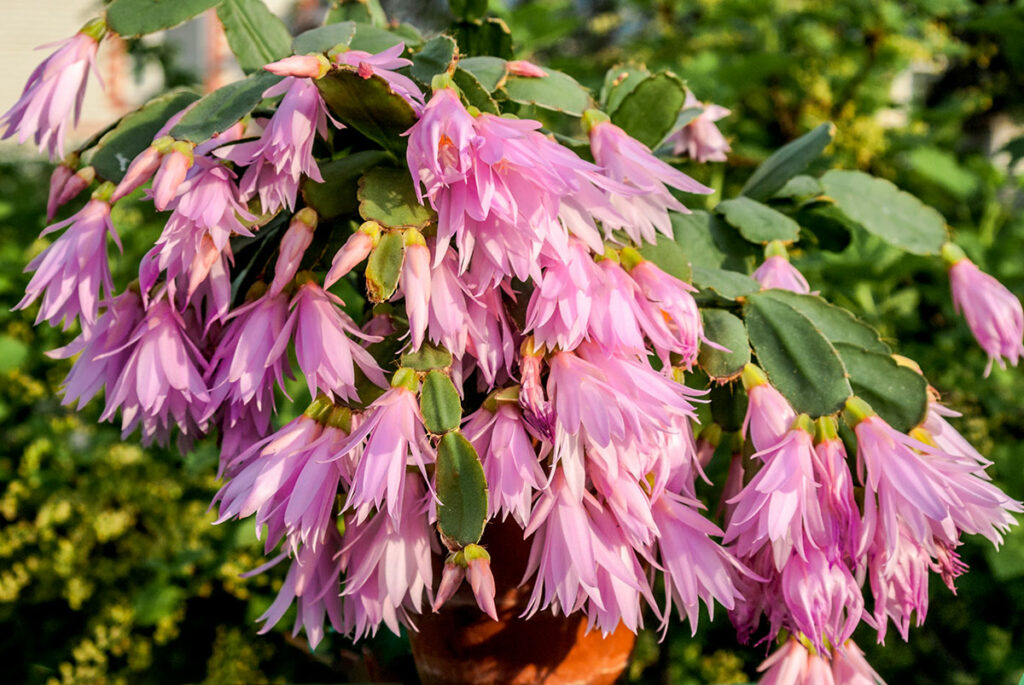
The Easter cactus (Schlumbergera gaertneri) is a popular holiday plant that is often confused with the Christmas cactus (Schlumbergera bridgesti) and the Thanksgiving cactus (Schlumbergera truncata).
While all three belong to the genus Schlumbergera and are similar in appearance, they bloom at different times.
The most distinguishable difference between the three holiday cacti is when they bloom, but there are subtle differences in the shape of the leaves, too.
How do you tell an Easter Cactus apart from a Thanksgiving and Christmas Cactus?
Thanksgiving cacti have pointed edges along the leaf segments and bloom in late fall, close to the traditional Thanksgiving holiday.
The Christmas cactus has scalloped edges and blooms in December.
The Easter cactus has more rounded edges to the leaves and blooms in the spring around Easter time.
To complicate matters further, many plant outlets sell hybrid holiday cacti in the fall and label them as holiday cacti or may randomly assign them the name of Thanksgiving or Christmas cacti.
It is not uncommon for them to be mislabeled, particularly when it comes to Thanksgiving and Christmas cacti. Because the Easter cactus blooms in the spring, it is less likely to be mislabeled, but it does happen.
The easiest way to identify the type of holiday cactus you have is by observing its blooming time. If your holiday cactus blooms in the spring, it is likely an Easter Cactus.
Easter Cactus Care
The Easter Cactus is native to the Brazilian rainforests, where they live on trees and rocks under the shade of large trees. They do best when you provide them with similar conditions in the home.
Light
Easter Cacti prefer bright, indirect sunlight for the majority of the day. They will thrive with some direct sun in the early morning or late in the day but will suffer if given too much direct sunlight.
Place your Easter Cactus in a bright room that receives plenty of indirect light but keep it several feet from the window to avoid the sun’s direct rays. An eastern or northern window works well.
Red leaf margins are a telltale sign your Easter cactus is receiving too much direct sunlight.
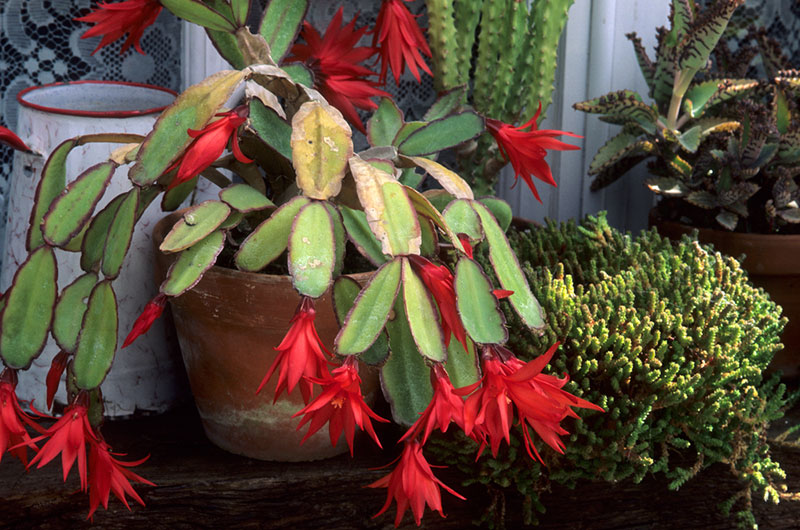
Temperature
Easter cacti perform well in average household temperatures, but they do need cool temperatures during the winter to promote blooming in the spring. Place your Easter cactus in an unheated room with temperatures between 55 and 60 degrees for 12 weeks to promote flowering.
It should also be noted that your Easter cactus needs complete darkness at night to stimulate further blooming. Close the drapes and eliminate any sources of stray light during the night.
Humidity
Unlike desert cacti that thrive in arid conditions, Easter cacti prefer high humidity. Place your Easter cactus on a pebble tray filled with water or use a humidifier to increase the humidity around your cactus.
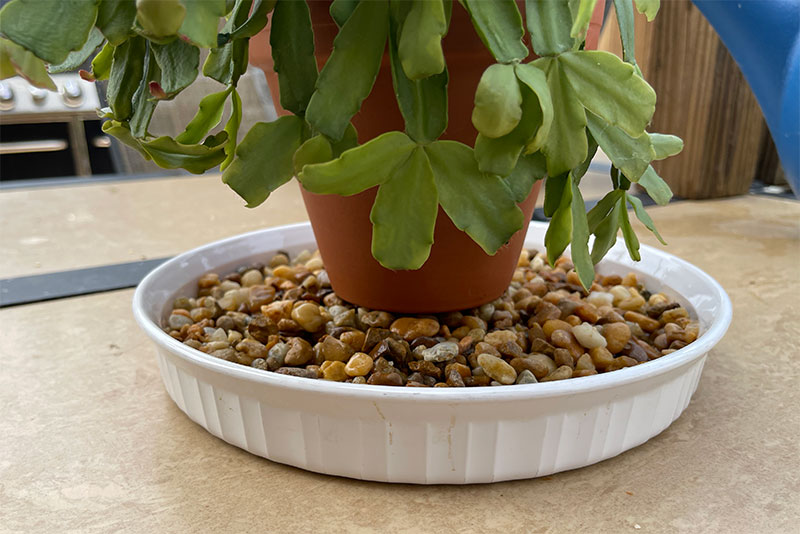
Soil
Easter cacti grow on trees and rocks in the rainforest and are accustomed to growing in loose soil or debris. They do not do well in dense potting soil mixes. Either purchase a quality cactus or succulent soil mix or make your own by mixing equal parts perlite, shredded bark, and all-purpose potting soil.
All-purpose potting soil is too dense for Easter cactus plants and may lead to issues with poor drainage, water-logged soil, or root rot.
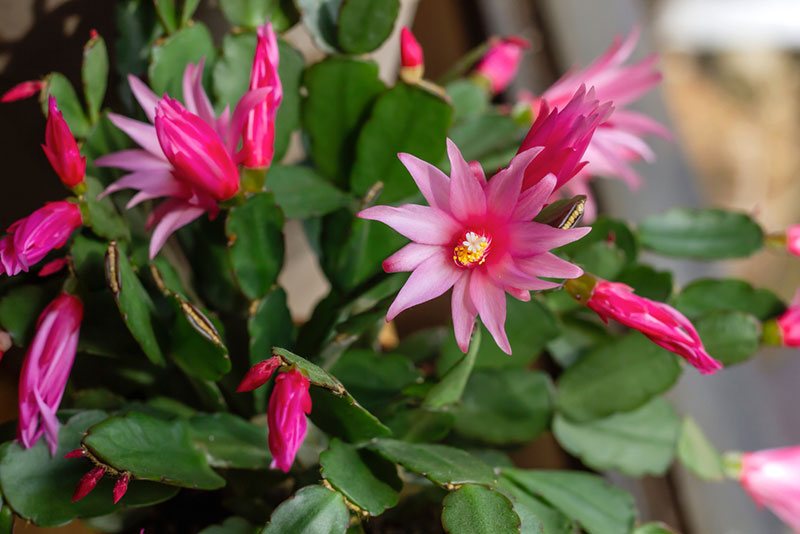
Water
Easter cacti have the ability to store water in their fleshy leaves to sustain them in a drought, but that doesn’t mean you should ignore their watering needs. They prefer evenly moist soil that is allowed to dry slightly between waterings. They will suffer if the soil is allowed to dry out completely or if it remains dry for too long.
Avoid watering them with cold water as this may shock the tender roots. Room temperature or tepid water is best. Likewise, use filtered or bottled water when possible. If you must use tap water, allow it to sit out overnight so chlorine and other chemical additives can evaporate.
Fertilizer
Fertilize your Easter Cactus once or twice a month with houseplant fertilizer from spring until fall, when the plant is actively growing. It does not need fertilizer in the fall and winter when the plant is resting. Resume fertilizing it in the spring when new growth resumes.
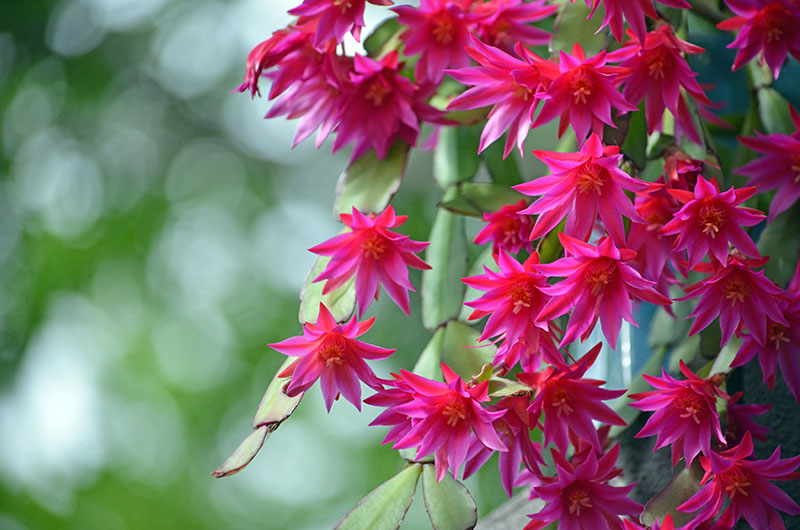
How to Propagate an Easter Cactus
Propagating your Easter cactus is relatively simple as the leaf segments can be rooted to form new plants. As a bonus, you will be forcing your cactus to branch out, too, as it will fork at the point where you remove leaf segments and begin growing two new ‘branches.’
- Remove leaf segments from the plant by gently pulling or twisting them from the plant. You can do this with one leaf segment or remove several segments at once.
- Allow the segments to dry for a day or two.
- Insert the cuttings to a depth of ½ inch in moist potting soil. You can dip the cuttings in rooting powder before planting them if you prefer, but it typically is not necessary.
- Keep the soil moist but not soggy until the cuttings have been rooted.
With proper care, your Easter Cactus will thrive inside your home and produce an abundance of blooms in the spring. It will increase in size and may need to be repotted every two to three years to provide room for the roots to grow.






